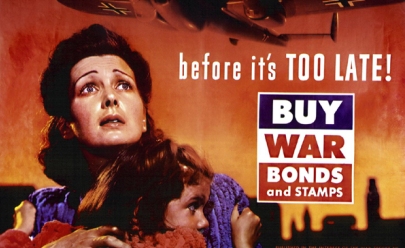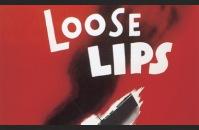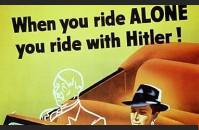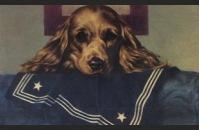PROPAGANDA POSTERS AT A GLANCE:

Image Gallery
Uncle Sam Wants You! The Propaganda Posters of WWII
When you think of the weapons of WWII, what comes to mind? Planes, tanks, money? Bullets, machine-guns, and grenade launchers? Yes, all of these were important tools in the effort to win the war. But so was information. In this case, government issued information. Over the course of the war the U.S. government waged a constant battle for the hearts and minds of the public. Persuading Americans to support the war effort became a wartime industry, just as important as producing bullets and planes. The U.S. government produced posters, pamphlets, newsreels, radio shows, and movies-all designed to create a public that was 100% behind the war effort.
In 1942 the Office of War Information (OWI) was created to both craft and disseminate the government’s message. This propaganda campaign included specific goals and strategies. Artists, filmmakers, and intellectuals were recruited to take the government’s agenda (objectives) and turn it into a propaganda campaign. This included posters found across American-from railway stations to post offices, from schools to apartment buildings.
During WWII the objectives of the U.S. government for the propaganda campaign were recruitment, financing the war effort, unifying the public behind the war effort and eliminating dissent of all kinds, resource conservation, and factory production of war materials. The most common themes found in the posters were the consequences of careless talk, conservation, civil defense, war bonds, victory gardens, “women power”, and anti-German and Japanese scenarios. It was imperative to have the American people behind the war effort. Victory over the Axis was not a given, and certainly would not be without the whole-hearted support of all men, women, and children.
To meet the government’s objectives the OWI (Office of War Information) used common propaganda tools (posters, radio, movies, etc.) and specific types of propaganda. The most common types used were fear, the bandwagon, name-calling, euphemism, glittering generalities, transfer, and the testimonial.
The posters pulled at emotions-both positive and negative. They used words as ammunition. “When you ride alone, you ride with Hitler.” “Loose lips might sink ships.” Messages made the war personal-you can make a difference, the soldiers are counting on you. Some posters also tapped into people’s patriotic spirit-do this and be a good American. They were bright and happy, colorful and positive. Other posters showed the dark side of war. They were filled with shocking images of what had happened to other countries and what could still happen in America if everyone did not do their part.
“The principal battleground of the war is not the South Pacific. It is not the Middle East. It is not England, or Norway, or the Russian Steppes. It is American opinion.”
--Archibald MacLeish, Director of the Office of Facts and Figures, forerunner of the Office of War Administration
“The function of the war poster is to make coherent and acceptable a basically incoherent and irrational ordeal of killing, suffering, and destruction that violate every accepted principle of morality and decent living.”
--O.W. Riegal, propaganda analyst for the Office of War Information
Download a printable version of this At A Glance
TAKE ACTION:


EDUCATION PROJECTS:
Student Travel – WWII Educational Tours
High school and college students, learn the leadership principles that helped win WWII on a trip to France or during a weeklong residential program in New Orleans. College credit is available, and space is limited.
See You Next Year! HS Yearbooks from WWII
Collected from across the United States, the words and pictures of these yearbooks present a new opportunity to experience the many challenges, setbacks and triumphs of the war through the eyes of America’s youth.
The Victory Gardens of WWII
Visit the Classroom Victory Garden Project website to learn about food production during WWII, find lesson plans and activities for elementary students, get tips for starting your own garden and try out simple Victory Garden recipes!
The Science and Technology of WWII
Visit our new interactive website to learn about wartime technical and scientific advances that forever changed our world. Incorporates STEM principles to use in the classroom.
Kids Corner: Fun and Games!
Make your own propaganda posters, test your memory, solve puzzles and more! Learn about World War II and have fun at the same time.






